7 Best Fruit Trees To Grow In Texas (With Pictures)
-
- Last updated:
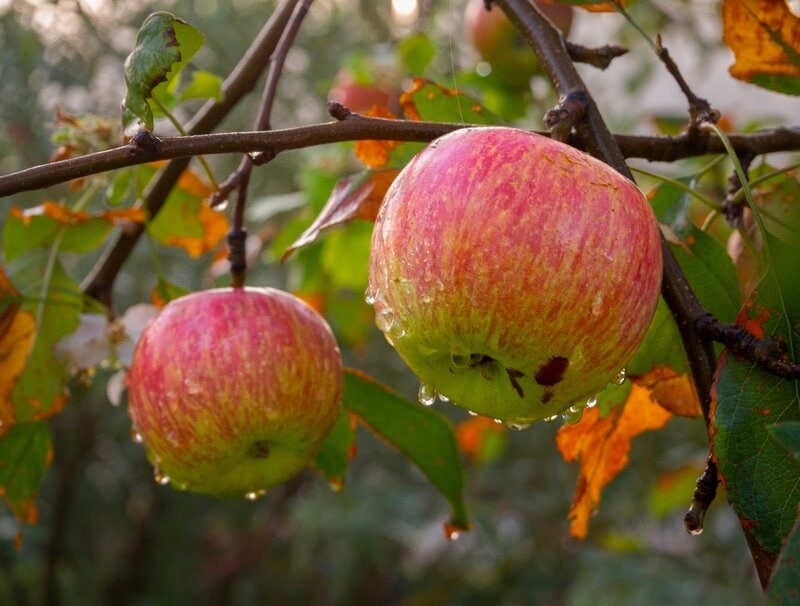
Fruit trees are a practical and beautiful choice for any area. They provide valuable shade and luscious fruits for baking, cooking, or eating right off the tree! Some regions of Texas have an arid and hot climate, so not every fruit tree is suited for the conditions. Also, some varieties require well-draining soil, and you may have to amend the soil on your property before planting. Below, we’ll discuss the fruit trees that do well in the Lone Star state.

The 7 Best Fruit Trees to Grow in Texas
1. Apple

| Light level | 6-8 hours daily |
| Water level | 1” per week |
| Frost tolerant? | Somewhat, but still need covering |
| Ideal Soil pH | Slightly acidic to neutral (5.8 to 7.0) |
Apple trees are staples in many areas of the US. They can do very well in northern and central areas of Texas as long as they’re given plenty of sunlight and a moderate amount of water.
Popular apple tree types commonly seen in Texas include Gala, Fuji, Granny Smith, and Golden Delicious. Apple trees need a good drainage system to wick water away from the roots because too much prolonged moisture will damage them. Many apple trees can get as tall as 25 feet, so ensure you have plenty of square footage.
2. Fig

| Light level | 6 hours daily |
| Water level | 1.5” per week |
| Frost tolerant? | Can tolerate temps as low as 15°F; Will need covering if it gets colder |
| Ideal Soil pH | Slightly acidic (5.5 to 6.5) |
Fig trees are an unconventional choice in many locales, but they thrive in any area of Texas. They aren’t very finicky and merely require you to water them in a sunny area. Unlike other fruit trees, fig trees don’t require pollination and will bear fruit when planted alone.
Figs are a great summer snack and are often added to breakfast items like cereal and yogurts. Figs are also very tasty when used in pastries like cake.
3. Persimmon

| Light level | 6-8 hours daily |
| Water level | 1+” per week |
| Frost tolerant? | Yes, can tolerate temperatures as low as -25°F |
| Ideal Soil pH | Slightly acidic (5.5 to 6.5) |
Persimmons are some of the easiest fruit trees to grow because they flourish under even the most adverse conditions. In a place like Texas, where the heat is frequently oppressively dry, their heat resistance is priceless. Unlike many fruit trees, persimmons are relatively small and top out around 15 feet.
Even if you don’t like the fruit, persimmon trees are a striking addition to any garden. They are very hardy and practically drought-proof, requiring little active watering. That makes them a perfect starter fruit tree.
4. Pear
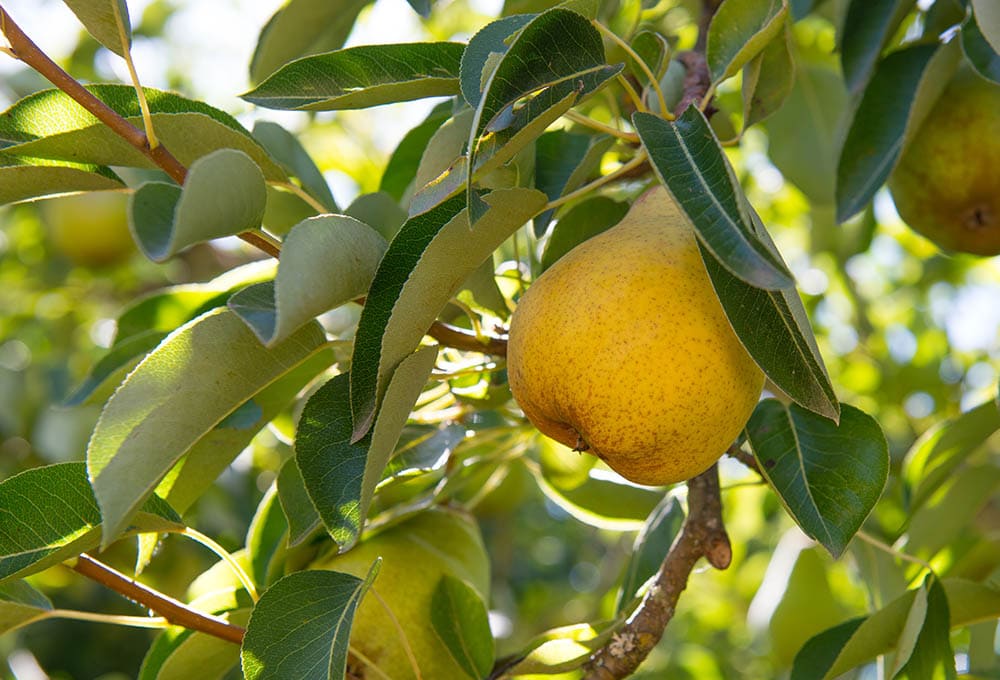
| Light level | 6-8 hours daily |
| Water level | 1+” per week |
| Frost tolerant? | No |
| Ideal Soil pH | Slightly acidic (6.0 to 6.5) |
Pears are a delicious alternative to apples that do slightly better in Texas conditions. Pear trees tolerate heat very well and enjoy the mild winters of central Texas, but they’re grown in every corner of the state. Most pear trees in Texas are an oriental variety due to that strain’s resistance to dastardly fireblight.
As long as you plant them in strong sunlight and water them regularly, pear trees grow up to be drought-resistant, bearing lots of fruit every fall. You need at least two pear trees of different varieties for them to produce fruit.
5. Pomegranate
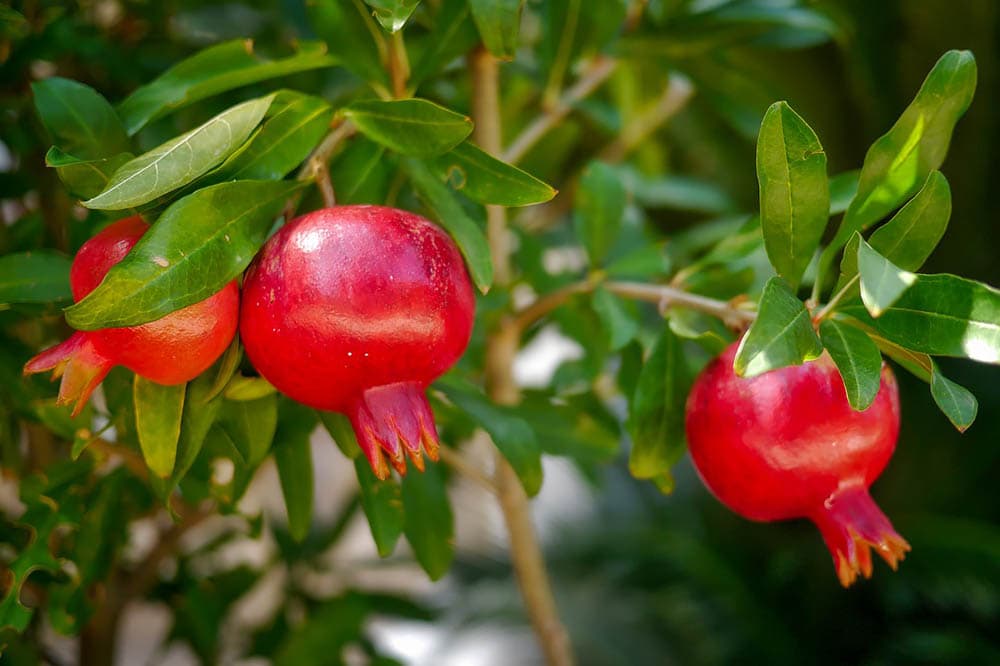
| Light level | 6-8 hours daily |
| Water level | 1+” per week |
| Frost tolerant? | Yes, down to temps as low as 10 to 18°F |
| Ideal Soil pH | Neutral to slightly acidic (5.5 to 7.0) |
Pomegranate trees typically do better in a milder climate like the Mediterranean, but they can also be found in Texas. Unlike other fruit trees that demand a certain soil pH, pomegranate trees perform well in slightly acidic or alkaline soils.
The only special requirement for a pomegranate tree is adequate drainage, but you’ll need to watch it in the wintertime. Bitter winters can make the tree suffer, and wet summers can make fruit rot.
Related Read: 20 Best Vegetables To Grow In Shade (With Pictures)
6. Plum
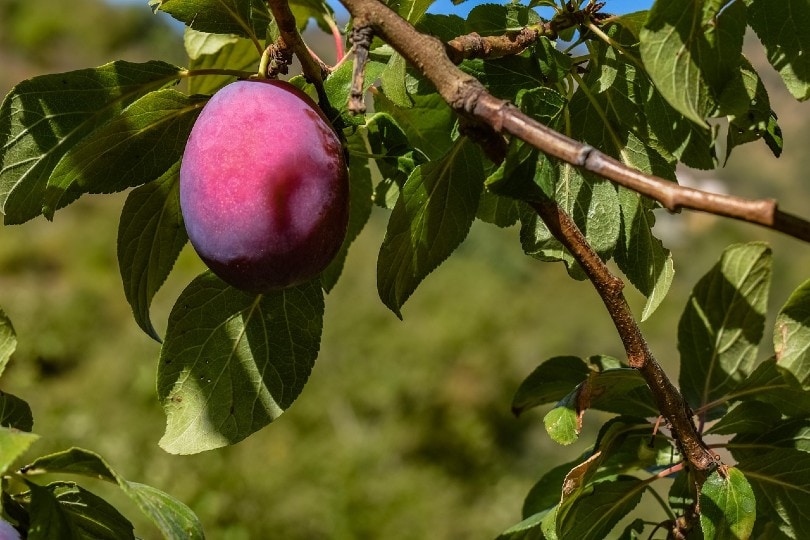
| Light level | 6+ hours daily |
| Water level | 1+” per week |
| Frost tolerant? | No |
| Ideal Soil pH | Slightly acidic (5.0 to 6.5) |
Plum trees do the best in central or southern Texas, where they’ll bloom in the late fall and early winter. After that, they bear fruit from late summer to mid-autumn. The most popular variety of plum in Texas is the Methley plum, which can bear fruit in most seasons.
While plums can be eaten right off the tree or turned into a tasty jelly or jam, many people keep them to dry the fruit into prunes. Plums generally aren’t self-pollinating, so you’ll need to have at least two for them to produce fruit.
7. Peach
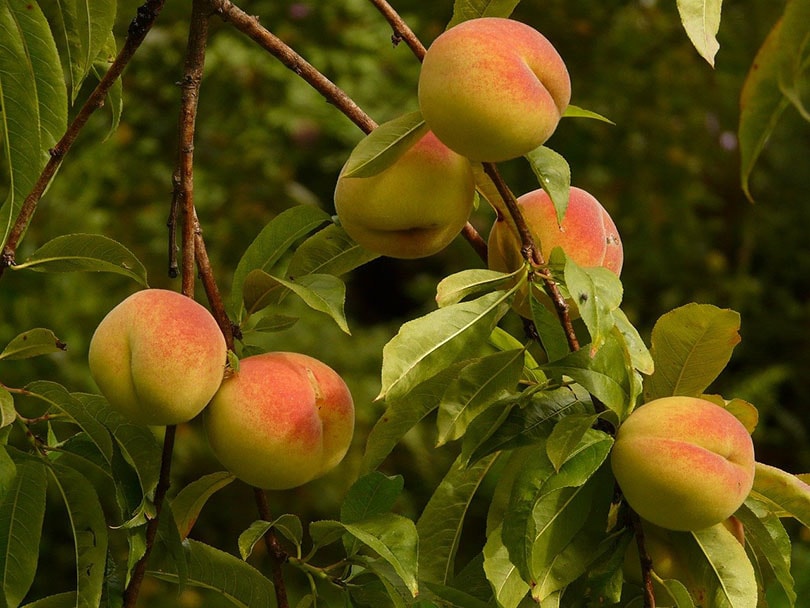
| Light level | 6-8 hours daily |
| Water level | 1+” per week |
| Frost tolerant? | No, but frost-tolerant species exist |
| Ideal Soil pH | Neutral to slightly acidic (6.0 to 7.0) |
Although it’s not Georgia, Texas still grows a lot of peaches. In fact, there are about one million peach trees planted across the state. Peaches can be grown in the Rio Grande Valley and as far north as the panhandle or as far east as El Paso. They do so well because they tolerate both heat and cold fairly well.
Peaches are stone fruit, so you need to maintain a sound drainage system so they don’t stay too wet. In the wet Texas summers, peaches can suffer fruit rot if conditions are too wet. Unlike many other fruit trees, most varieties of peach trees are self-pollinating and merely need insect pollinators to produce fruit.
•You might also like:How Much Water Does It Take to Grow an Apple?

Conclusion
While not every type of fruit tree will grow well in Texas, the ones we’ve listed here are great options if you want something to brighten up your garden or to provide you and your family with a healthy snack when the time is right. However, fruit trees suffer if they aren’t grown in well-draining soil. Before planting a fruit tree, you can send a soil sample to the local agricultural department to ensure the tree thrives on your property.
Featured Image Credit: Alika Obraz, Shutterstock
Contents

